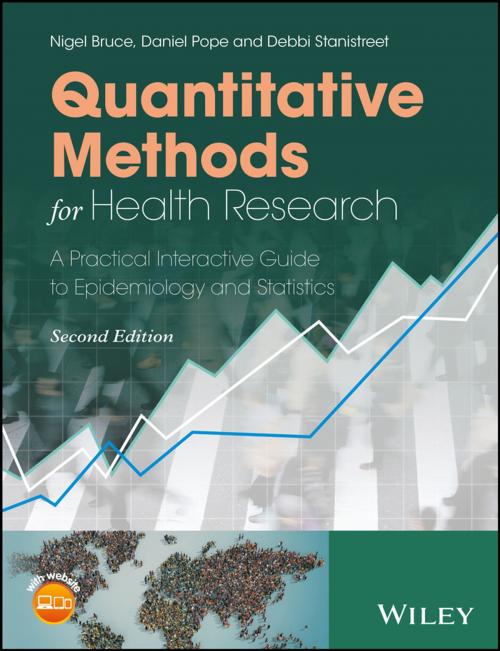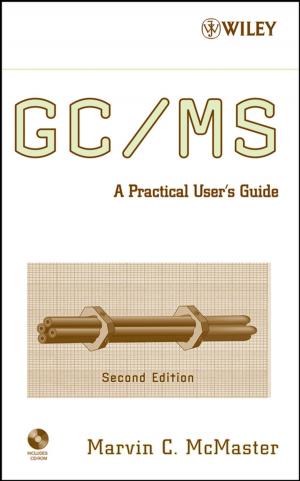Quantitative Methods for Health Research
A Practical Interactive Guide to Epidemiology and Statistics
Nonfiction, Health & Well Being, Medical, Medical Science, Pharmacology| Author: | Bruce, Daniel Pope, Debbi Stanistreet | ISBN: | 9781118665404 |
| Publisher: | Wiley | Publication: | December 6, 2017 |
| Imprint: | Wiley-Blackwell | Language: | English |
| Author: | Bruce, Daniel Pope, Debbi Stanistreet |
| ISBN: | 9781118665404 |
| Publisher: | Wiley |
| Publication: | December 6, 2017 |
| Imprint: | Wiley-Blackwell |
| Language: | English |
A practical introduction to epidemiology, biostatistics, and research methodology for the whole health care community
This comprehensive text, which has been extensively revised with new material and additional topics, utilizes a practical slant to introduce health professionals and students to epidemiology, biostatistics, and research methodology. It draws examples from a wide range of topics, covering all of the main contemporary health research methods, including survival analysis, Cox regression, and systematic reviews and meta-analysis—the explanation of which go beyond introductory concepts. This second edition of Quantitative Methods for Health Research: A Practical Interactive Guide to Epidemiology and Statistics also helps develop critical skills that will prepare students to move on to more advanced and specialized methods.
A clear distinction is made between knowledge and concepts that all students should ensure they understand, and those that can be pursued further by those who wish to do so. Self-assessment exercises throughout the text help students explore and reflect on their understanding. A program of practical exercises in SPSS (using a prepared data set) helps to consolidate the theory and develop skills and confidence in data handling, analysis, and interpretation. Highlights of the book include:
- Combining epidemiology and bio-statistics to demonstrate the relevance and strength of statistical methods
- Emphasis on the interpretation of statistics using examples from a variety of public health and health care situations to stress relevance and application
- Use of concepts related to examples of published research to show the application of methods and balance between ideals and the realities of research in practice
- Integration of practical data analysis exercises to develop skills and confidence
- Supplementation by a student companion website which provides guidance on data handling in SPSS and study data sets as referred to in the text
Quantitative Methods for Health Research, Second Edition is a practical learning resource for students, practitioners and researchers in public health, health care and related disciplines, providing both a course book and a useful introductory reference.
A practical introduction to epidemiology, biostatistics, and research methodology for the whole health care community
This comprehensive text, which has been extensively revised with new material and additional topics, utilizes a practical slant to introduce health professionals and students to epidemiology, biostatistics, and research methodology. It draws examples from a wide range of topics, covering all of the main contemporary health research methods, including survival analysis, Cox regression, and systematic reviews and meta-analysis—the explanation of which go beyond introductory concepts. This second edition of Quantitative Methods for Health Research: A Practical Interactive Guide to Epidemiology and Statistics also helps develop critical skills that will prepare students to move on to more advanced and specialized methods.
A clear distinction is made between knowledge and concepts that all students should ensure they understand, and those that can be pursued further by those who wish to do so. Self-assessment exercises throughout the text help students explore and reflect on their understanding. A program of practical exercises in SPSS (using a prepared data set) helps to consolidate the theory and develop skills and confidence in data handling, analysis, and interpretation. Highlights of the book include:
- Combining epidemiology and bio-statistics to demonstrate the relevance and strength of statistical methods
- Emphasis on the interpretation of statistics using examples from a variety of public health and health care situations to stress relevance and application
- Use of concepts related to examples of published research to show the application of methods and balance between ideals and the realities of research in practice
- Integration of practical data analysis exercises to develop skills and confidence
- Supplementation by a student companion website which provides guidance on data handling in SPSS and study data sets as referred to in the text
Quantitative Methods for Health Research, Second Edition is a practical learning resource for students, practitioners and researchers in public health, health care and related disciplines, providing both a course book and a useful introductory reference.















